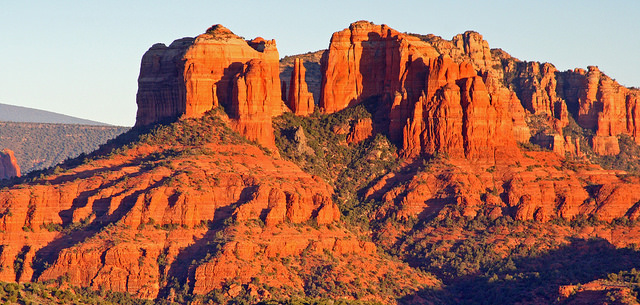5.4: Influences on Darwin
- Page ID
- 12106
\( \newcommand{\vecs}[1]{\overset { \scriptstyle \rightharpoonup} {\mathbf{#1}} } \)
\( \newcommand{\vecd}[1]{\overset{-\!-\!\rightharpoonup}{\vphantom{a}\smash {#1}}} \)
\( \newcommand{\dsum}{\displaystyle\sum\limits} \)
\( \newcommand{\dint}{\displaystyle\int\limits} \)
\( \newcommand{\dlim}{\displaystyle\lim\limits} \)
\( \newcommand{\id}{\mathrm{id}}\) \( \newcommand{\Span}{\mathrm{span}}\)
( \newcommand{\kernel}{\mathrm{null}\,}\) \( \newcommand{\range}{\mathrm{range}\,}\)
\( \newcommand{\RealPart}{\mathrm{Re}}\) \( \newcommand{\ImaginaryPart}{\mathrm{Im}}\)
\( \newcommand{\Argument}{\mathrm{Arg}}\) \( \newcommand{\norm}[1]{\| #1 \|}\)
\( \newcommand{\inner}[2]{\langle #1, #2 \rangle}\)
\( \newcommand{\Span}{\mathrm{span}}\)
\( \newcommand{\id}{\mathrm{id}}\)
\( \newcommand{\Span}{\mathrm{span}}\)
\( \newcommand{\kernel}{\mathrm{null}\,}\)
\( \newcommand{\range}{\mathrm{range}\,}\)
\( \newcommand{\RealPart}{\mathrm{Re}}\)
\( \newcommand{\ImaginaryPart}{\mathrm{Im}}\)
\( \newcommand{\Argument}{\mathrm{Arg}}\)
\( \newcommand{\norm}[1]{\| #1 \|}\)
\( \newcommand{\inner}[2]{\langle #1, #2 \rangle}\)
\( \newcommand{\Span}{\mathrm{span}}\) \( \newcommand{\AA}{\unicode[.8,0]{x212B}}\)
\( \newcommand{\vectorA}[1]{\vec{#1}} % arrow\)
\( \newcommand{\vectorAt}[1]{\vec{\text{#1}}} % arrow\)
\( \newcommand{\vectorB}[1]{\overset { \scriptstyle \rightharpoonup} {\mathbf{#1}} } \)
\( \newcommand{\vectorC}[1]{\textbf{#1}} \)
\( \newcommand{\vectorD}[1]{\overrightarrow{#1}} \)
\( \newcommand{\vectorDt}[1]{\overrightarrow{\text{#1}}} \)
\( \newcommand{\vectE}[1]{\overset{-\!-\!\rightharpoonup}{\vphantom{a}\smash{\mathbf {#1}}}} \)
\( \newcommand{\vecs}[1]{\overset { \scriptstyle \rightharpoonup} {\mathbf{#1}} } \)
\( \newcommand{\vecd}[1]{\overset{-\!-\!\rightharpoonup}{\vphantom{a}\smash {#1}}} \)
\(\newcommand{\avec}{\mathbf a}\) \(\newcommand{\bvec}{\mathbf b}\) \(\newcommand{\cvec}{\mathbf c}\) \(\newcommand{\dvec}{\mathbf d}\) \(\newcommand{\dtil}{\widetilde{\mathbf d}}\) \(\newcommand{\evec}{\mathbf e}\) \(\newcommand{\fvec}{\mathbf f}\) \(\newcommand{\nvec}{\mathbf n}\) \(\newcommand{\pvec}{\mathbf p}\) \(\newcommand{\qvec}{\mathbf q}\) \(\newcommand{\svec}{\mathbf s}\) \(\newcommand{\tvec}{\mathbf t}\) \(\newcommand{\uvec}{\mathbf u}\) \(\newcommand{\vvec}{\mathbf v}\) \(\newcommand{\wvec}{\mathbf w}\) \(\newcommand{\xvec}{\mathbf x}\) \(\newcommand{\yvec}{\mathbf y}\) \(\newcommand{\zvec}{\mathbf z}\) \(\newcommand{\rvec}{\mathbf r}\) \(\newcommand{\mvec}{\mathbf m}\) \(\newcommand{\zerovec}{\mathbf 0}\) \(\newcommand{\onevec}{\mathbf 1}\) \(\newcommand{\real}{\mathbb R}\) \(\newcommand{\twovec}[2]{\left[\begin{array}{r}#1 \\ #2 \end{array}\right]}\) \(\newcommand{\ctwovec}[2]{\left[\begin{array}{c}#1 \\ #2 \end{array}\right]}\) \(\newcommand{\threevec}[3]{\left[\begin{array}{r}#1 \\ #2 \\ #3 \end{array}\right]}\) \(\newcommand{\cthreevec}[3]{\left[\begin{array}{c}#1 \\ #2 \\ #3 \end{array}\right]}\) \(\newcommand{\fourvec}[4]{\left[\begin{array}{r}#1 \\ #2 \\ #3 \\ #4 \end{array}\right]}\) \(\newcommand{\cfourvec}[4]{\left[\begin{array}{c}#1 \\ #2 \\ #3 \\ #4 \end{array}\right]}\) \(\newcommand{\fivevec}[5]{\left[\begin{array}{r}#1 \\ #2 \\ #3 \\ #4 \\ #5 \\ \end{array}\right]}\) \(\newcommand{\cfivevec}[5]{\left[\begin{array}{c}#1 \\ #2 \\ #3 \\ #4 \\ #5 \\ \end{array}\right]}\) \(\newcommand{\mattwo}[4]{\left[\begin{array}{rr}#1 \amp #2 \\ #3 \amp #4 \\ \end{array}\right]}\) \(\newcommand{\laspan}[1]{\text{Span}\{#1\}}\) \(\newcommand{\bcal}{\cal B}\) \(\newcommand{\ccal}{\cal C}\) \(\newcommand{\scal}{\cal S}\) \(\newcommand{\wcal}{\cal W}\) \(\newcommand{\ecal}{\cal E}\) \(\newcommand{\coords}[2]{\left\{#1\right\}_{#2}}\) \(\newcommand{\gray}[1]{\color{gray}{#1}}\) \(\newcommand{\lgray}[1]{\color{lightgray}{#1}}\) \(\newcommand{\rank}{\operatorname{rank}}\) \(\newcommand{\row}{\text{Row}}\) \(\newcommand{\col}{\text{Col}}\) \(\renewcommand{\row}{\text{Row}}\) \(\newcommand{\nul}{\text{Nul}}\) \(\newcommand{\var}{\text{Var}}\) \(\newcommand{\corr}{\text{corr}}\) \(\newcommand{\len}[1]{\left|#1\right|}\) \(\newcommand{\bbar}{\overline{\bvec}}\) \(\newcommand{\bhat}{\widehat{\bvec}}\) \(\newcommand{\bperp}{\bvec^\perp}\) \(\newcommand{\xhat}{\widehat{\xvec}}\) \(\newcommand{\vhat}{\widehat{\vvec}}\) \(\newcommand{\uhat}{\widehat{\uvec}}\) \(\newcommand{\what}{\widehat{\wvec}}\) \(\newcommand{\Sighat}{\widehat{\Sigma}}\) \(\newcommand{\lt}{<}\) \(\newcommand{\gt}{>}\) \(\newcommand{\amp}{&}\) \(\definecolor{fillinmathshade}{gray}{0.9}\)
How do structures like this form?
Cathedral Rock in Sedona, Arizona. Though Arizona was not on Darwin's itinerary, the work of others that saw and studied Earth's changing landscape influenced him. One geologist, Charles Lyell, proposed that gradual geological processes have shaped Earth’s surface, inferring that Earth must be far older than most people believed. How else could structures like those shown here develop? If in fact Earth was much older then just 6,000 years, Darwin believed there would have been plenty of time for evolution to occur.
Influences on Darwin
Science, like evolution, always builds on the past. Darwin didn’t develop his theory completely on his own. He was influenced by the ideas of earlier thinkers.
Earlier Thinkers Who Influenced Darwin
- Jean Baptiste Lamarck (1744–1829) was an important French naturalist. He was one of the first scientists to propose that species change over time. However, Lamarck was wrong about how species change. His idea of the inheritance of acquired characteristics is incorrect. Traits an organism develops during its own life time cannot be passed on to offspring, as Lamarck believed.
- Charles Lyell (1797–1875) was a well-known English geologist. Darwin took Lyell's book, Principles of Geology, with him on the Beagle. In the book, Lyell argued that gradual geological processes have gradually shaped Earth’s surface. From this, Lyell inferred that Earth must be far older than most people believed.
- Thomas Malthus (1766–1834) was an English economist. He wrote an essay titled On Population. In the essay, Malthus argued that human populations grow faster than the resources they depend on. When populations become too large, famine and disease break out. In the end, this keeps populations in check by killing off the weakest members.
Artificial Selection
These weren’t the only influences on Darwin. He was also aware that humans could breed plants and animals to have useful traits. By selecting which animals were allowed to reproduce, they could change an organism’s traits. The pigeons in Figure below are good examples. Darwin called this type of change in organisms artificial selection. He used the word ‘‘artificial’’ to distinguish it from natural selection.
 Artificial Selection in Pigeons. Pigeon hobbyists breed pigeons to have certain characteristics. Both of the pigeons in the bottom row were bred from the common rock pigeon.
Artificial Selection in Pigeons. Pigeon hobbyists breed pigeons to have certain characteristics. Both of the pigeons in the bottom row were bred from the common rock pigeon.Wallace’s Theory
Did you ever hear the saying that “great minds think alike?” It certainly applies to Charles Darwin and another English naturalist named Alfred Russel Wallace. Wallace lived at about the same time as Darwin. He also traveled to distant places to study nature. Wallace wasn’t as famous as Darwin. However, he developed basically the same theory of evolution. While working in distant lands, Wallace sent Darwin a paper he had written. In the paper, Wallace explained his evolutionary theory. This served to confirm what Darwin already thought.
Summary
- Darwin was influenced by other early thinkers, including Lamarck, Lyell, and Malthus.
- Darwin was also influenced by his knowledge of artificial selection.
- Wallace’s paper on evolution confirmed Darwin’s ideas.
Review
- What is the inheritance of acquired characteristics? What scientist developed this mistaken idea?
- Who was Charles Lyell? How did he influence Darwin?
- What is artificial selection? How does it work?
- How did Alfred Russel Wallace influence Darwin?
| Image | Reference | Attributions |
 |
[Figure 1] | Credit: Common rock pigeon: Image copyright Marketa Mark, 2014; Carrier pigeon: Image copyright guentermanaus, 2014; Fantail pigeon: Image copyright Ulrike Haberkorn, 2014 Source: http://www.shutterstock.com License: CC BY-NC |
 |
[Figure 2] | Credit: Common rock pigeon: Image copyright Marketa Mark, 2014; Carrier pigeon: Image copyright guentermanaus, 2014; Fantail pigeon: Image copyright Ulrike Haberkorn, 2014 Source: http://www.shutterstock.com License: Used under licenses from Shutterstock.com |

